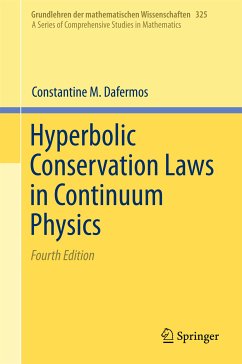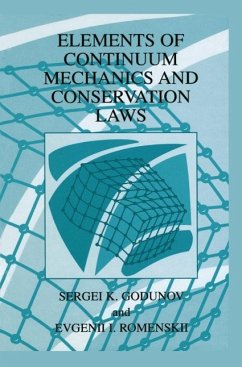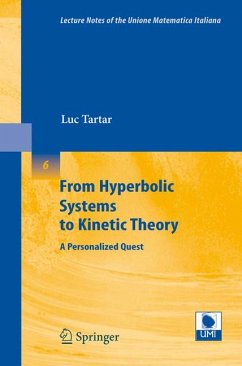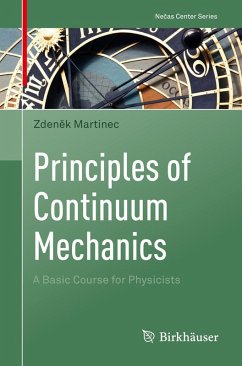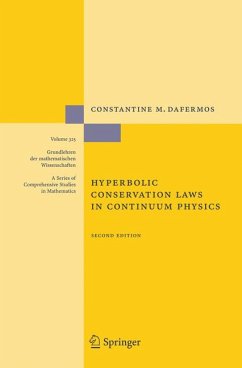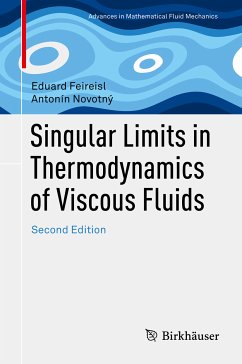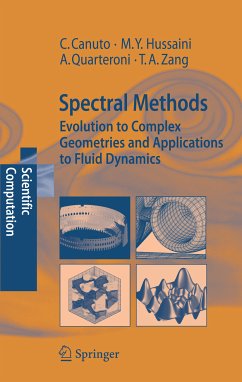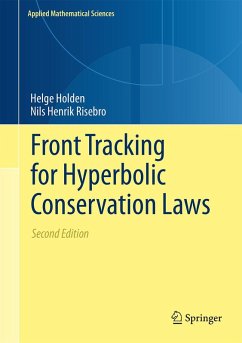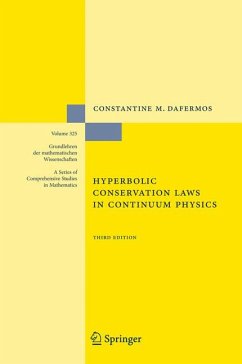
Hyperbolic Conservation Laws in Continuum Physics (eBook, PDF)
Versandkostenfrei!
Sofort per Download lieferbar
104,95 €
inkl. MwSt.
Weitere Ausgaben:

PAYBACK Punkte
52 °P sammeln!
The aim of this work is to present a broad overview of the theory of hyperbolic c- servation laws, with emphasis on its genetic relation to classical continuum physics. It was originally published a decade ago, and a second, revised edition appeared in 2005. It is a testament to the vitality of the ?eld that in order to keep up with - cent developments it has become necessary to prepare a substantially expanded and updated new edition. A new chapter has been added, recounting the exciting recent developmentsin classical open problems in compressible ?uid ?ow. Still another - dition is an accou...
The aim of this work is to present a broad overview of the theory of hyperbolic c- servation laws, with emphasis on its genetic relation to classical continuum physics. It was originally published a decade ago, and a second, revised edition appeared in 2005. It is a testament to the vitality of the ?eld that in order to keep up with - cent developments it has become necessary to prepare a substantially expanded and updated new edition. A new chapter has been added, recounting the exciting recent developmentsin classical open problems in compressible ?uid ?ow. Still another - dition is an account of the early history of the subject, which had an interesting, - multuous childhood. Furthermore, a substantial portion of the original text has been reorganized so as to streamline the exposition, update the information, and enrich the collection of examples. In particular, Chapter V has been completely revised. The bibliography has been updated and expanded as well, now comprising over - teenhundred titles. The background, scope, and plan of the book are outlined in the Introduction, following this preface. Geometric measure theory, functional analysis and dynamical systems provide the necessary tools in the theory of hyperbolic conservation laws, but to a great - tent the analysis employscustom-madetechniques,with strong geometric?avor, - derscoring wave propagation and wave interactions. This may leave the impression that the area is insular, detached from the mainland of partial differential equations.
Dieser Download kann aus rechtlichen Gründen nur mit Rechnungsadresse in A, B, BG, CY, CZ, D, DK, EW, E, FIN, F, GR, HR, H, IRL, I, LT, L, LR, M, NL, PL, P, R, S, SLO, SK ausgeliefert werden.



